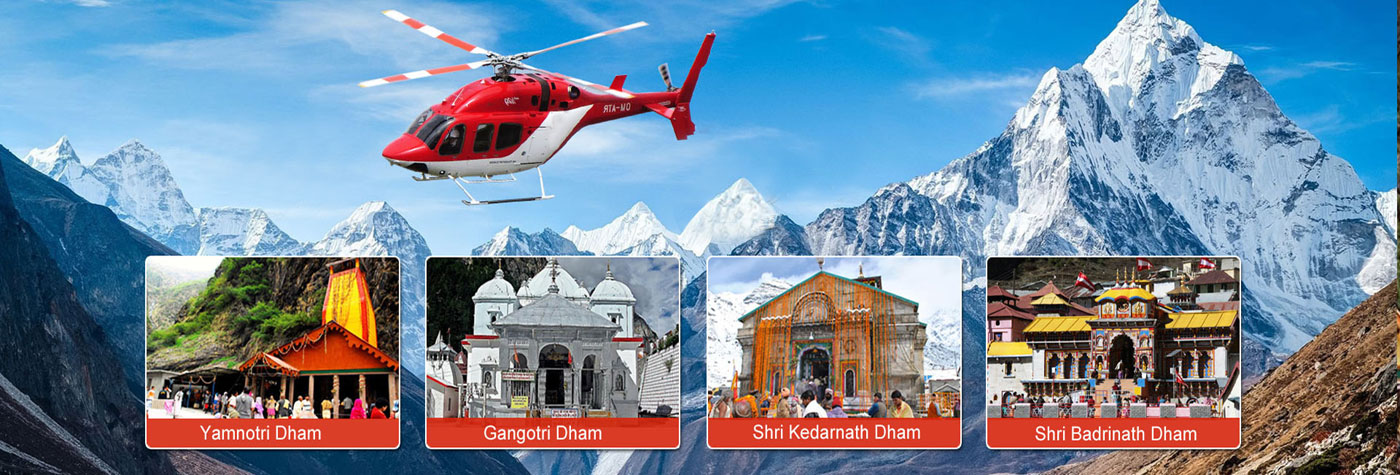Kedarnath
Kedarnath is a holy Hindu town located in Rudraprayag district of Uttarakhand in India. It is one of the Char Dhams located in the Himalayas. Kedarnath is situated at an astonishing height of 3584 meter above sea level near the head of Mandakini River. The Kedarnath temple lies amidst the majestic snow-capped Garhwal Himalayan ranges and is thronged by thousands of tourists each year.
Lord Shiva manifested in the form of Jyotirlingam or the cosmic light. Kedarnath is highest among the 12 Jyotirlingas. This ancient and magnificent temple is located in the Rudra Himalaya range. This temple, over a thousand years old is built of massive stone slabs over a large rectangular platform. Ascending through the large gray steps leading to the holy sanctums we find inscriptions in Pali on the steps. The present temple was built by Adi Shankaracharya.The inner walls of the temple sanctum are adorned with figures of various deities and scenes from mythology. The origin of the revered temple can be found in the great epic - Mahabharata. According to legends, the Pandavas sought the blessings of lord Shiva to atone their sin after the battle of Mahabharata. Lord Shiva eluded them repeatedly and while fleeing took refuge at Kedarnath in the form of a bull. On being followed, he dived into ground leaving behind his hump on the surface. Outside the temple door a large statue of the Nandi Bull stands as guard. A conical rock formation inside the temple is worshipped as Lord Shiva in his Sadashiva form. The temple, believed to be very ancient, has been continually renovated over the centuries. It is situated at an altitude of 3,581 mt. It is a 21 km trek from Sonprayag.
At the approach of winters in the month of November, the holy statue of Lord Shiva, is carried down from Kedarnath to Ukhimath, and is reinstated at Kedarnath, in the first week of May. It is at this time, that the doors of the temple are thrown open to pilgrims, who flock from all parts of India, for a holy pilgrimage. The shrine closes on the first day of Kartik (Oct-Nov) and reopens in Vaishakh (Apr-May) every year. During its closure the shrine is submerged in snow and worship is performed at Ukhimath.
Kedarnath is amongst the holiest pilgrimages for the devout Hindu. It is set amidst the stunning mountainscape of the Garhwal Himalayas at the head of the Mandakini River. Kedar is another name of lord Shiva, the protector and the destroyer. Shiva is considered the embodiment of all passions - love, hatred, fear, death and mysticism which are expressed through his various forms.
The shrine of Kedarnath is very scenically placed, and is surrounded by lofty, snow - covered mountains, and during summer grassy meadows covering the valleys. Immediately behind the temple, is the high Keadardome peak, which can be sighted from great distances. The sight of the temple and the peak with its perpetual snows is simply enthralling.
Best Season / Best time to visit
Kedarnath is cold for the most part of the year, however, May to June and September to October are the best time to visit Kedarnath. Winter ranges from November to April, reaching sub-zero temperatures along with heavy rainfall. Summertime (May-June) brings pleasant weather, ideal for visiting Kedarnath and other nearby sites. However, monsoons fall from July to August and bring heavy rainfall, causing landslides and hindrance.
Summer (May- June)
Summertime is experienced during the months of May and June as the temperatures rise to around 17 degrees Celsius. It is the ideal time to trek to the temple and visit other places nearby due to pleasant weather.
Monsoon (July - August)
Monsoon falls from July to August, bringing heavy rainfall with landslides being very common. The temperature also drops down to 12 degrees Celsius. It is considered as a flood-prone area, considering 2013 floods, so the temple is shut down during monsoon.
Winter (November - April)
November to April bring winters and along with it, chilly weather, sub-zero temperatures, and heavy snowfall. This not the best time to visit Kedarnath as roads may get blocked and will be carpeted with snow. However, if you are visiting, you may want to carry heavy woolens.
 +91 9799050299
+91 9799050299 

